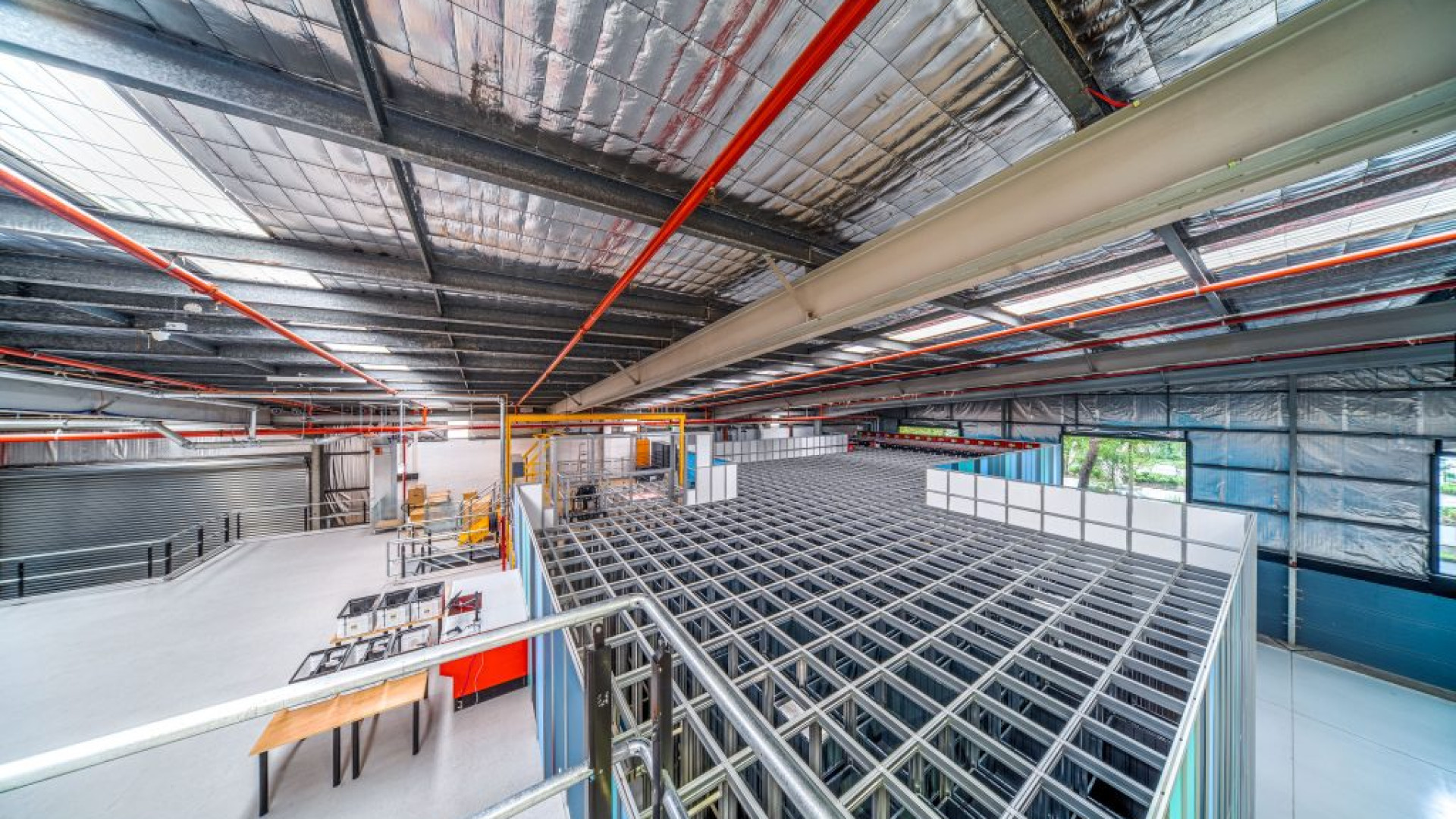Adequate investigation and preparation is crucial for the successful installation of a mezzanine on brownfield sites. This is especially true when the spans are longer than 6m or the load capacity required on the mezzanine is over 4KPA as it ensures that your facility’s slab can withstand the weight/point loads of the structure and the intended load. This aspect is not only critical for safety but also vital for maximising the value of your mezzanine investment.
Unistor specialises in mezzanine projects across Sydney and Melbourne, providing expert guidance on piling as a key foundational element.
What Is Piling And Why Is It Sometimes Necessary?
Piling serves as the hidden support when the load requirement exceeds the capacity of the slab. Usually constructed from concrete or steel, piles provide structural reinforcement to foundations and slabs when installed vertically into soft or unstable ground (such as fill). At Unistor we usually recommend steel screw piles depending on the site conditions and soil type as they required minimal excavation and are conveniently driven or augured to the necessary depth to reach suitable bearing strata, such as dense clays, gravel beds, or rock. Pile depths can vary significantly, ranging from three to thirty meters, depending on local ground conditions.
Incorporating piles into both new and existing slabs that need to bear additional loads, such as mezzanine flooring structures, offers greater efficiency and cost reductions compared to many conventional alternatives such as pouring thicker, stronger slab, which on brownfield sites, is not an option. Piles come in various forms, primarily as ‘driven end bearing’ or ‘continuous flight auger’ (CFA), with the latter relying on skin friction between the pile shaft and the strata through which it passes. Unistor’s structural engineering expertise and many years of experience ensures that your company receives the most suitable piling solution tailored to its specific needs. Below is an illustration of piling types:
When Is Piling Required For Warehouse Automation Fitouts?
AutoStore:
AutoStore Grid is an automated storage and retrieval system using robots within a cubic layout or grid.
Systems like AutoStore can be massively optimised by being built on a mezzanine, therefore allowing sorting to be done below and increasing airflow under the grid. However, this can impose high point loads on the slab, due to the density of product, sometimes stacked over 5m high in the AutoStore grid on the mezzanine. The points loads are assessed by our structural and civil engineers and if the slab is not sufficient bear these point loads we then revert to piling. The first step is to conduct a geological survey to obtain a core sample. Unistor collaborates with ground investigation and scanning companies as part of our comprehensive service to clients. Once the ground slab and underlying soil conditions are assessed, and if pile foundations are deemed necessary for reinforcement, further tests are carried out to determine the location of bedrock or the friction capabilities of the soil.
Multi-Tier Mezzanines:
Piles are often required under multi-tiered mezzanine floors due to the increased load-bearing requirements of these structures. As the number of tiers increases, so does the weight and stress exerted on the supporting foundation or slab. As a leading provider of multi-tier mezzanine system in the APAC region, Unistor understands the importance of reinforcing the foundation to ensure the stability and safety of multi-tier mezzanines. In such scenarios, screw piles are frequently the cleanest and fastest choice for reinforcement. Screw piles can be quickly installed with minimal disturbance to the surrounding soil, generating less noise and vibration compared to other piling methods. This efficient installation process minimizes downtime and allows businesses to resume normal operations as quickly as possible, making screw piles an ideal solution for reinforcing foundations under multi-tier mezzanines.
Robot Arms And Jib Cranes:
Robotic arms are used in warehouse automation for various tasks, but the most common uses are palletising and depalletising, Quality control and inspection and material handrail to replace heavy manual handling of repetitious tasks. On the other hand, jib cranes are typically set up in areas where low volume lifting and moving is required such as robot and equipment maintenance areas or areas where equipment needs to be lifted over a conveyor line on an irregular bases, generally for maintenance.
Piling is required under jib cranes and robotic arms due to the heavy loads and dynamic forces these systems exert on the supporting structure, including the foundation or slab. These forces can cause significant stress on the ground beneath the equipment, which may lead to deformation, cracking, or even failure of the slab if not properly reinforced.
As mentioned above, Jib cranes and robotic arms are often used in industrial settings for lifting, moving, and manipulating heavy objects. Their operation generates not only static loads but also dynamic loads, such as impact forces and vibrations, which can be transmitted to the supporting structure. The combined effect of these loads can exceed the bearing capacity of the soil or the structural strength of an unreinforced slab, thereby compromising the stability and safety of the equipment. Piling provides the necessary support and reinforcement to the foundation or slab by transferring the loads from the equipment to the more stable and robust layers of soil or bedrock beneath. Piles can be made of concrete, steel, or timber, and they are installed vertically into the ground, either by driving or auguring, until they reach the suitable bearing strata. This ensures that the weight and forces generated by the jib cranes and robotic arms are adequately supported, preventing any potential damage or failure of the slab and maintaining the safe operation of the equipment.
Other Considerations:
- Opting for a larger column grid is a sensible choice, as this results in fewer piles. However, striking the right balance is essential, as an excessively large grid will increase the load on the pile, necessitating a larger pile.
- The key to a successful piling solution lies in thorough soil investigation, an experienced pile company, and the teamwork of those responsible for producing the end product, be it a slab, a building, or a mezzanine floor.
- Unistor’s expert structural engineers will advise on the best options for each project and client, considering both the mezzanine column grid and piling’s cost and practical usage implications. By partnering with Unistor for your mezzanine projects in Sydney and Melbourne, you can ensure a strong and reliable foundation for your business operations.
If you have any further questions about slab requirements, piling or any other preparations required for a mezzanine build, feel free call us on 1300 372 994 or email [email protected].



